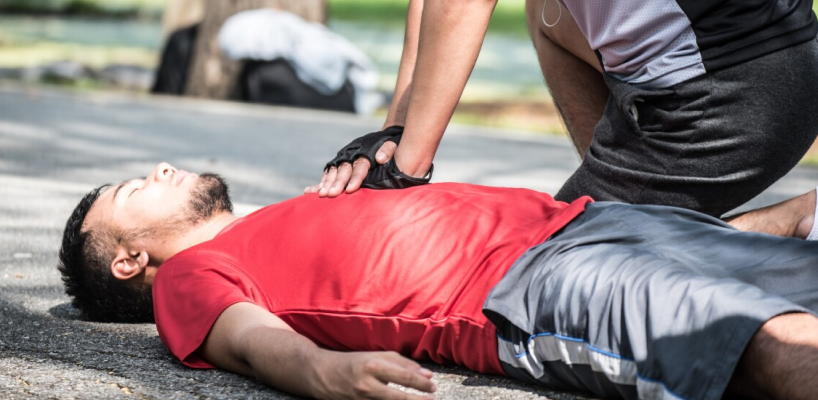
Last Updated On: September 9, 2024
SCA strikes approximately 326,200 to 395,000 individuals outside hospitals each year in the U.S., including an estimated 6,328 people less than 18 years of age. The chain of survival is like a roadmap for saving living emergencies like sudden cardiac arrest.It’s an important series of steps that anyone can use to help suffering from a cardiac arrest. Imagine it as a chain where each link is crucial, from recognizing the problem and calling for help doing CPR and using an AED– every step matters.
The Chain of Survival is a conceptual framework helping those suffering from sudden cardiac arrest (SCA) or other life-threatening emergencies. It is commonly used in emergency medical services (EMS) and healthcare settings to guide the response to such emergencies and optimize patient outcomes.
Steps Cardiac chain of survival
The Cardiac Chain of Survival outlines critical steps to improve survival rates for individuals experiencing sudden cardiac arrest (SCA). These steps emphasize the importance of prompt recognition, early intervention, and coordinated efforts to provide effective treatment. The steps of the Cardiac Chain of Survival typically include:
The first step is the prompt recognition of sudden cardiac arrest. You need to identify the signs and symptoms of cardiac arrest, such as sudden loss of consciousness, absence of pulse, and no normal breathing.
Upon recognizing SCA, activating the emergency response system immediately is crucial. This involves calling for help by dialing the local emergency number (e.g., 911) or alerting nearby individuals to call for assistance.
Early initiation of CPR is the next critical step in the Cardiac Chain of Survival. CPR involves a combination of chest compressions and rescue breaths. Prompt CPR improves the chances of survival for individuals experiencing SCA.
Early defibrillation is essential for restoring a normal heart rhythm with a shockable rhythm. Automated External Defibrillators (AEDs) are portable devices that work with the heart rhythm and deliver a shock if needed. Prompt defibrillation within minutes of SCA onset is crucial for improving survival rates.
Once emergency medical services (EMS) personnel arrive, they provide advanced life support interventions, including airway management, administration of medications, and additional defibrillation if necessary. Post-resuscitation care focuses on stabilizing the individual, optimizing oxygenation and perfusion, and transporting them to a hospital for further evaluation and treatment.
Following resuscitation and stabilization, individuals who have experienced sudden cardiac arrest require integrated post-cardiac arrest care in the hospital setting. It includes ongoing monitoring, diagnostic evaluations, and targeted interventions to address the underlying cause of cardiac arrest and prevent recurrence.
The importance of the Chain of Survival and CPR (Cardiopulmonary Resuscitation) cannot be overstated in the context of saving lives during cardiac emergencies such as sudden cardiac arrest (SCA). Here are several key reasons why the Chain of Survival and CPR are critically important:
Conclusion
The Chain of Survival and CPR play a pivotal role in saving lives during cardiac emergencies. These interventions emphasize the importance of a rapid and coordinated response, early initiation of CPR by bystanders, and integration with advanced medical care to maximize the chances of survival and improve outcomes for individuals experiencing sudden cardiac arrest.
Read More: Goals Of First Aid Training